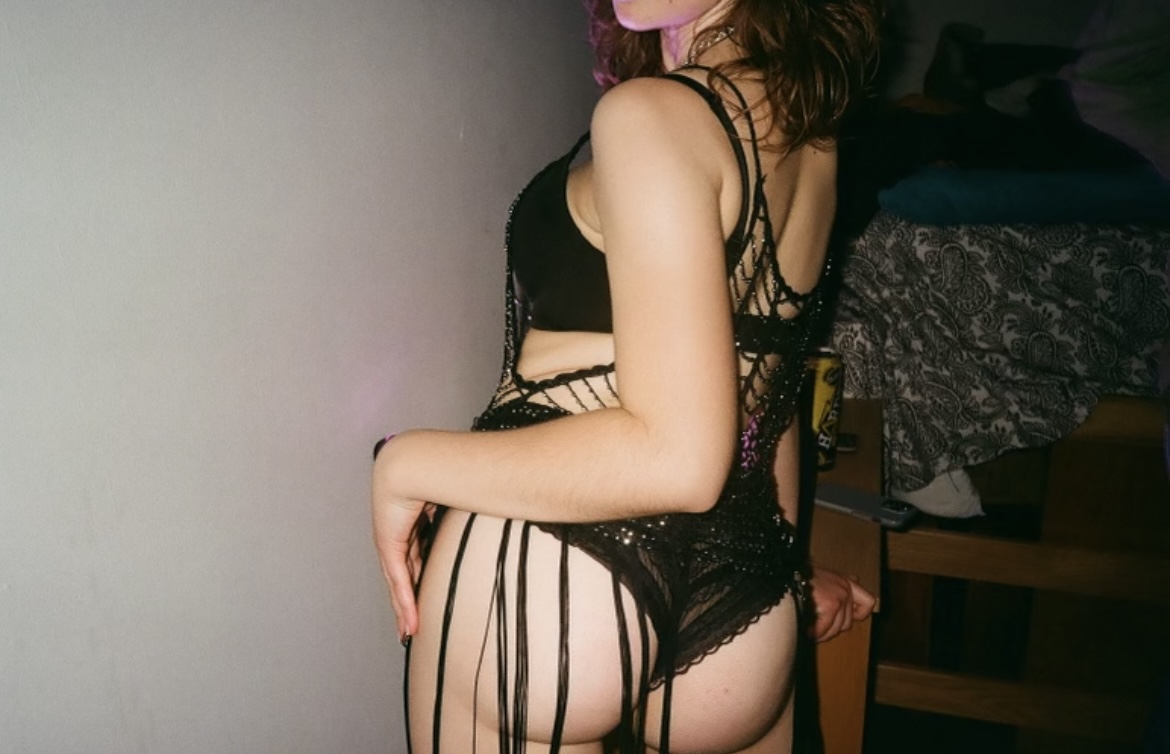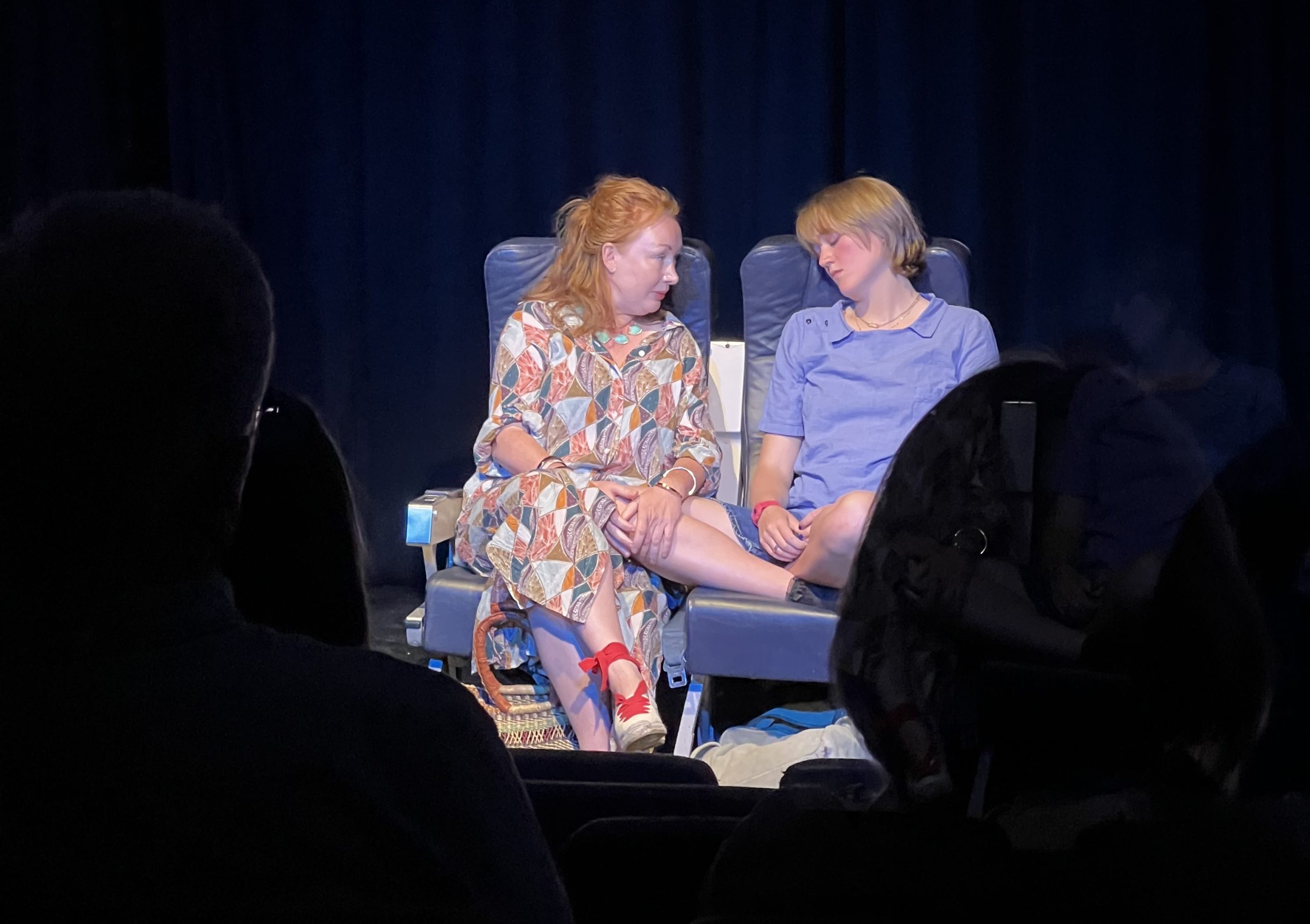
The objectification manifesto

- Until last Thursday I was happy to be objectified, as long as I was in—what I perceived to be—control. We may have never met, but you still could have met my ass during a night in Bridge, a pole performance, on Instagram stories. My ass and what I do with it are out there in the world and it brought me great joy to twerk, wear G-strings, and frolic about, mostly because I was objectified. I do not condone the sentiment that someone who is wearing short clothing is ‘asking for it’, and perhaps the statement I am about to make will not help to dismantle that justification, but when I am out and about shaking my ass, I am hoping to be noticed, to draw attention. But this fantasy comes from an empowering place. A place where I am in control and self-creating the conditions to be seen solely through the potential sexualization of my body. This was all true, that is, until last Thursday.
- Last Thursday I was practicing pole with a friend in my new heels, and she recorded me and posted it on her Instagram story. In the video I am wearing a black bodysuit with lacy black booty shorts, which are the shape and coverage of a cheeky bathing suit. I am on the ground, rolling around, clacking my heels together, sliding across the floor, twerking. It encapsulates a total moment of performance and joy; I look at the camera and wink. My friend tagged me when she posted, and I reposted it because I felt agency over the video and what my body was doing. I knew too that it would get attention, that I would get attention, and by now maybe you can tell, the idea of attention made me feel good.
- Before I left for Oxford, I showed my mom in Seattle how to have the time in London on her phone screen. That way she would always know what time it was here and call at reasonable hours. The night that I reposted this story to my Instagram, I got a call at 1 am. I would come to find out the fact that the video was publicly on my Instagram “disturbed” my mom—the quotes are not meant to minimise or mock her statement. She promptly hung up, but I remained with the phone pressed to my ear. It is a vulnerability of my daughterhood to be so far away from her, but to disturb her was another level of weakness.
- This word hung closely to me for the next couple days. It would come to the surface of my consciousness when I was in the shower, trying to write an essay, walking to college. The only time this word had hung this close before was when I felt disturbed about myself in high school.
- It was a strange time, high school, primarily coloured by COVID and the blow-up of middle school friend groups. I was strictly dedicated to my classes and defined myself how others seemed to define me: Not studious, but singular, my dedicated habits led to a conclusion of consistency. Although this was safe and, in many ways, the expected behaviour of a student, I wrestled with this idea of what a teenager should be: of wanting to be ‘reckless’. To be a teenager is to prove oneself to at least three different ‘audiences’: friends, family, social norms, and, I would add, yourself, but that takes time. Being seen by teenage social norms as ‘studious’ made me by proxy mature, and to be seen as mature was to be separated from the spontaneity of youth, from teenagehood. My teenage years felt distant and fleeting, and the only way they seemed within reach was when I fantasized about being someone who I believed evoked the sensation of spontaneity: a burlesque dancer.
- When I was eight, my mom showed me the film Burlesque, which stars Christina Aguilera and Cher. What was most hypnotizing about the movie was the way that Christina Aguilera’s character was treated in relation to her body. When she becomes a burlesque dancer in a Los Angeles club, on stage in her glitter and rhinestones, the audience clapped for the way her body moved, for the mystique and intrigue that she made in her performance. The way the audience watched her was how I envisaged what it meant to embody spontaneity, to surprise people, to wow them, to hold them captive. The way she did this I believed, was through her body, by letting the audience view her body as she moved it in sensual and ‘provocative’ ways. Ways, we are told, are meant to be secret. This, to eight-year-old me, was objectification; to allow oneself to be seen through the preformed sexualization of your body, to evoke a sensation of awe from others about the potential of what they perceive from your movement. And if objectification led to surprising people, wowing them, and most importantly, attention, then I wanted it too.
- My fantasy of being a burlesque dancer in high school came with the understanding that were I to be a burlesque dancer, my singularity would be challenged and thrown off course by a ‘second self’ defined by sensual, cheeky performance. But the idea of the second self, and, as I grew older, its burgeoning reality, made me feel uneasy with who I was. I grappled with this idea of multiplicity, how I could hold two senses of self, one of ‘provocative’ performance and one entrenched within the expected studious nature of go-getter girls. I saw these as separate parts because I couldn’t find an example of someone who was validated as both a good student and honoured by the way they inhabited their sensuality to wow people. The provocative side is villainised by much of mainstream culture. Despite the fact that the female body is praised and often seen as an object, women aren’t validated for taking that ‘power’ into their own hands; for making an object of themselves, unless it’s for someone else. I began to feel ashamed by my own desire to be on stage in as little clothing as possible.
- When I came to university, my ability to shake ass was social capital, and people revelled in this ‘plot twist’ of who I originally came off as. It’s easy social lubricant, and it’s even easier if you enjoy the illusion of what that makes you: spontaneous, mysterious. I started to not invest energy into self-reflection and gave into an image that was palatable; I was an object, an object which I made. But last Thursday I had this kind of revelation fuelled by the word ‘disturbed.’ What disturbed me about my own ‘second-self’ in high school was the same thing that my mom was disturbed by. She saw it as I did, a rejection of my poise and the work towards ‘respectable’ womanhood. But that is only because we both saw my dancing, my movement, as making an object of myself for someone else, of presenting an ‘opening’ for someone to perceive me as less than the intelligent, hard-working, girl that I have grown into. Because social norms dictate that these are separate worlds, and one cannot possibly inhabit their sensuality and be doing it with intention.
- When Christiana Aguilera’s character is preforming, she is not clapped for because of her body, but the way she inhabits her body, the way she moves. When I am shaking my ass, I am inhabiting my body, not making it an object for other people. I am creating a performance grounded in my sexuality, and yes, sometimes with the intention of pleasing other people, but that brings me great joy. I understood Burlesque as acts of objectification because that is the framework for which we give to the sensual, ‘provocative’ movement of women. When that is the only framework, this kind of movement becomes shameful, disturbing, and intended for someone else’s pleasure at the cost of one studiousness, go-getterness, teenagehood, and intelligence.
- This kind of movement is not a rejection of any part of myself. It is a moment of being fully in my body and embodying what I have been told cannot be mine: my sexuality. It brings me great joy to twerk, wear G-strings, and frolic about, but this is not an opening for objectification. The reason I twerk, wear G-strings, frolic, is because of my intelligence. Without my whole self, there could be no ‘second self’—I no longer see it as secondary. As of last Thursday, I understand myself through my multiplicity, not as product of it.∎
Words by Sydney Walter. Image courtesy of Grace Gabriel.






